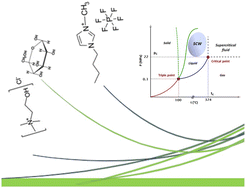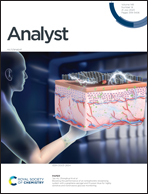Greener chemistry in analytical sciences: from green solvents to applications in complex matrices. Current challenges and future perspectives: a critical review†
Abstract
More environment-friendly solvents in analytical chemistry are almost inevitable in both sample preparation and analysis to meet the high standards of sustainable chemistry and human welfare. In this review paper, a critical look at the advantages and still unsolved problems of most potential classes of green solvents is presented to give an overview of the current state-of-the-art in this field. Replacing volatile organic compounds (VOCs) by ecofriendly and benign solvents in extractions/separations in sample preparation, as the most tedious and demanding step in analysis, is one of roads toward sustainable chemistry. Water under sub- and supercritical conditions, carbon-dioxide, ionic liquids (ILs), deep eutectic solvents (DESs), and those of natural origin (NADES) belong to the most promising classes of solvents in green analytical chemistry. Basic theory and mechanisms of their use illustrated by representative but not exhaustive list of examples related to complex matrices (environmental and natural food products) from analytical practice are presented in this review. Perspectives of QuEChERS, in line with GAC principles, are highlighted, in line with current trends of “going green” for quick, easy, cheap, effective, rugged, and safe analytical methods. Compliance with green chemistry (GC), especially green analytical chemistry (GAC) principles, is not a fashionable issue but, more the trend toward a sustainable future with greener chemistry; thus, green metrics are an unavoidable tool to measure how green the applied method or procedure is. Herein, the most common tools will be presented and discussed, such as national environmental method index (NEMI), analytical ecoscale, green analytical procedure index (GAPI), analytical greenness calculator (AGREE), complementary green analytical procedure index (ComplexGAPI), and analytical greenness metric for sample preparation (AGREEprep). The future trends for research and development in this still expanding field are presented in a critical view of advantages and disadvantages as well as improvement of the validation of analytical procedures. The creation of new certified reference materials (CRMs) and validated methods for specified analytes in complex matrices is a demanding task in the coming years. Tailor-made solvents with physicochemical properties for intended use are required for the selective extraction and separation and open numerous possibilities and huge potential for future research and industrial applications.

- This article is part of the themed collection: Analyst Review Articles 2023


 Please wait while we load your content...
Please wait while we load your content...